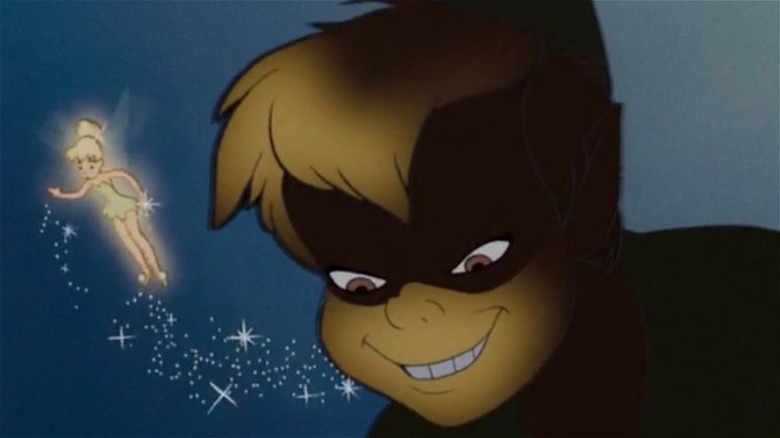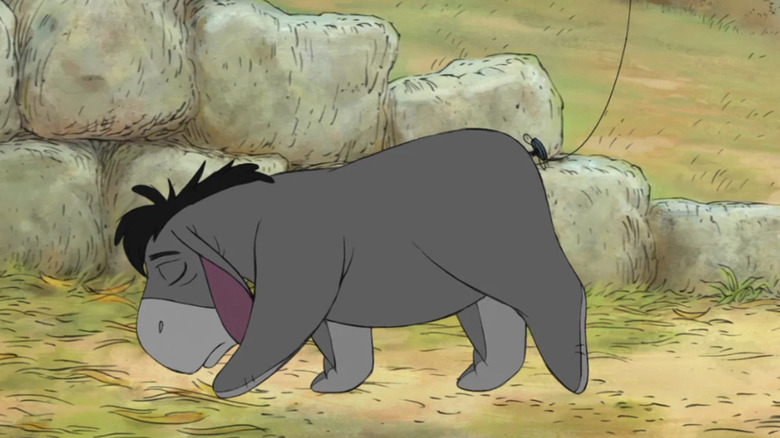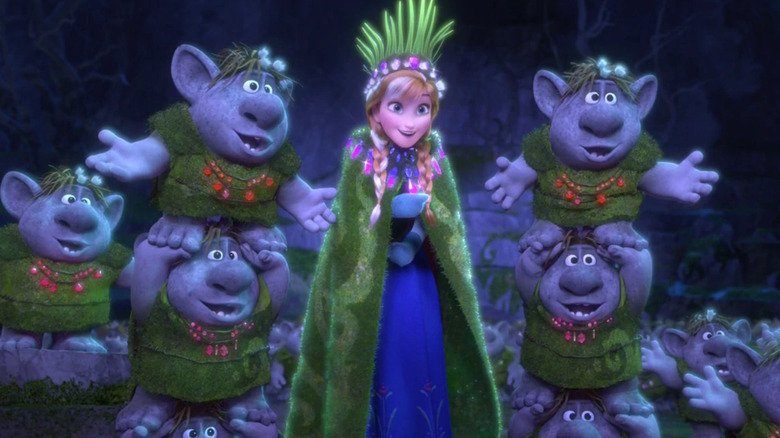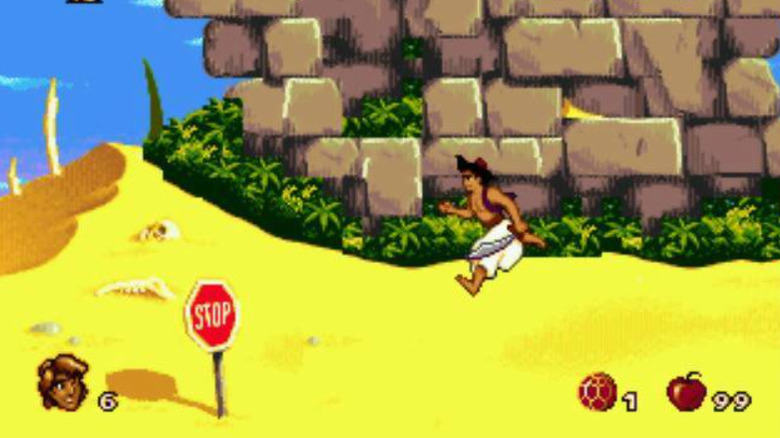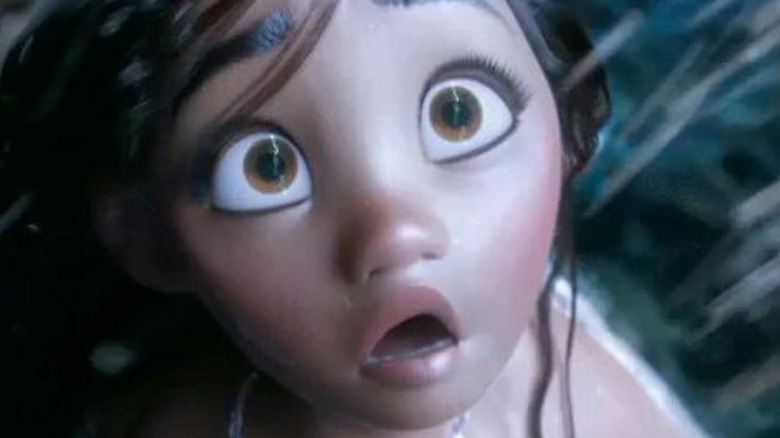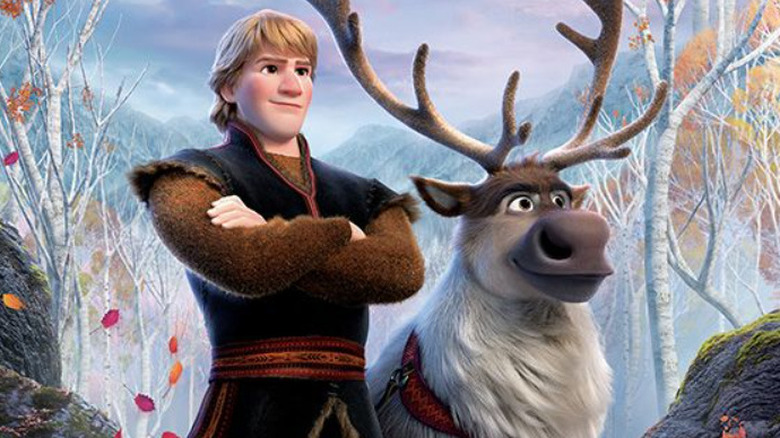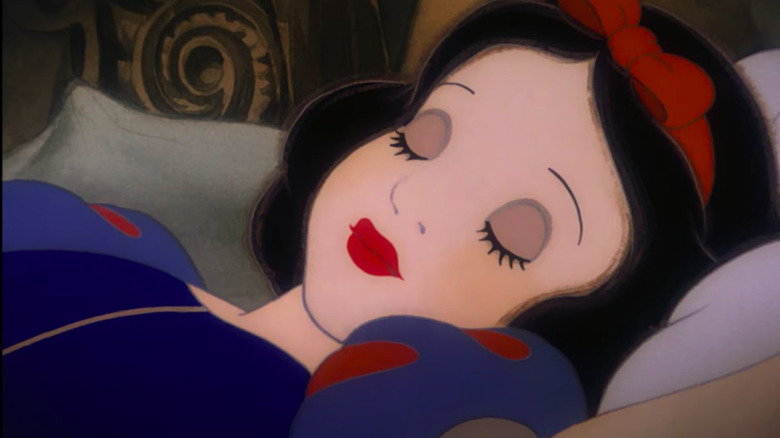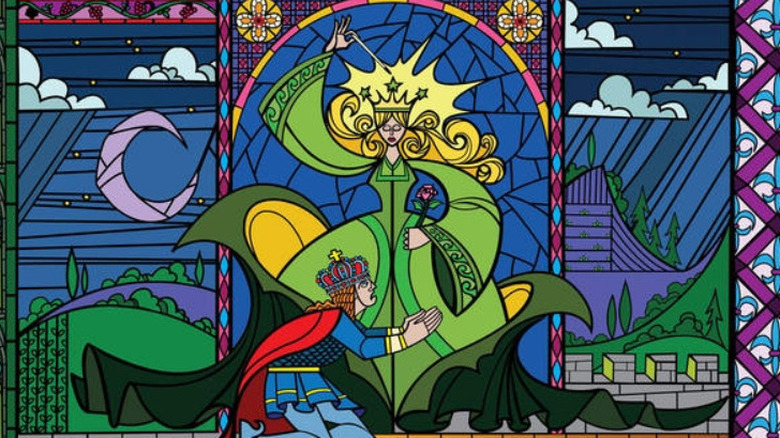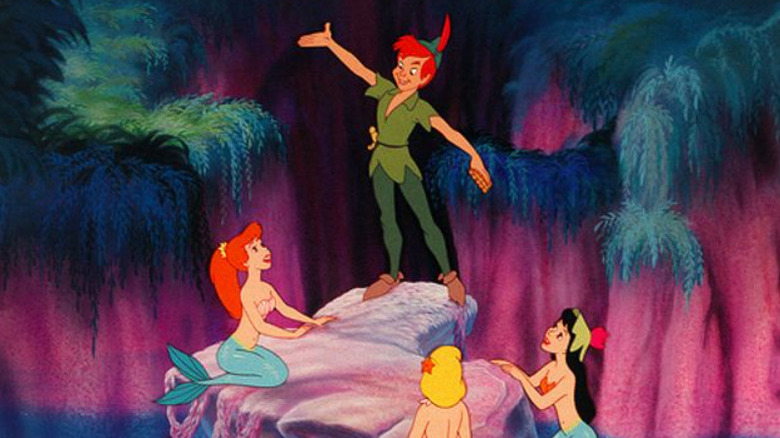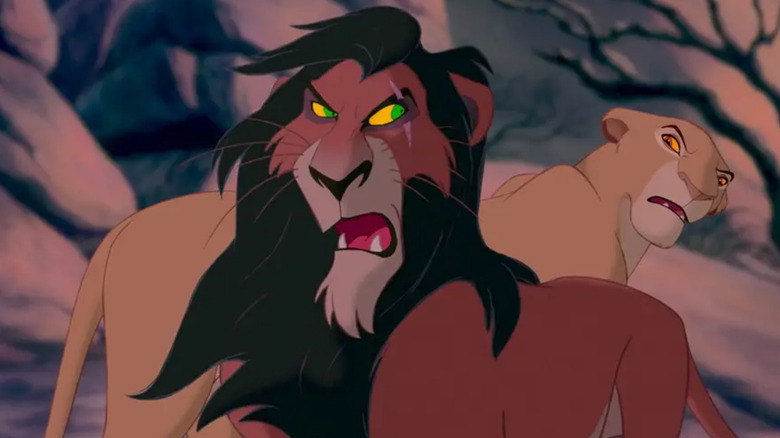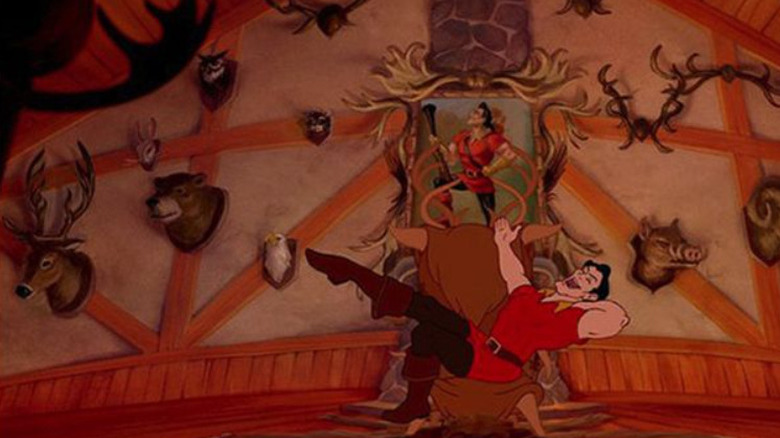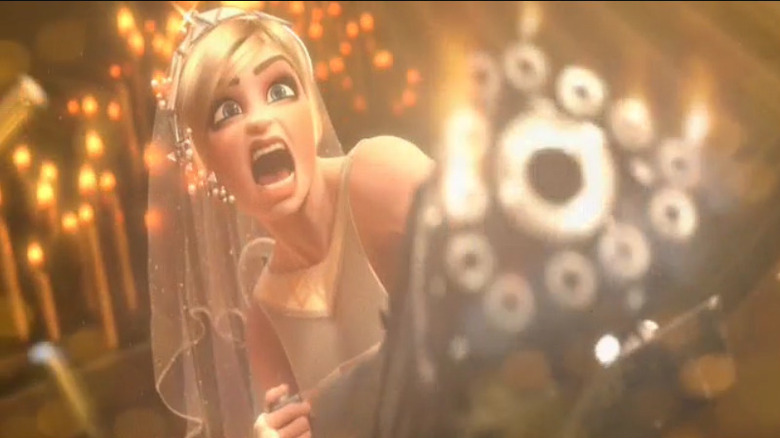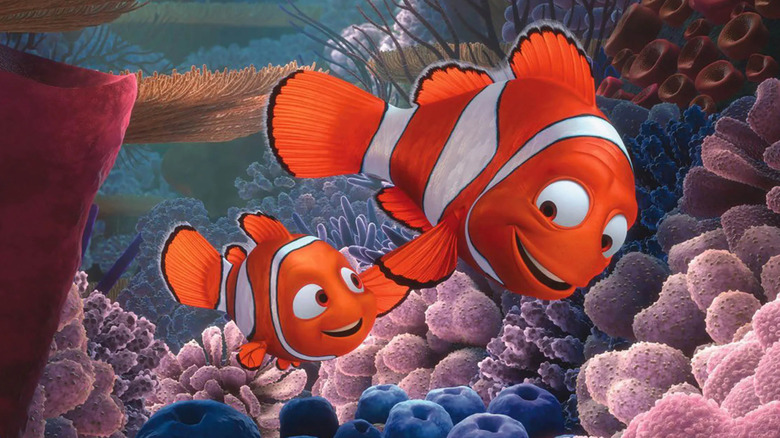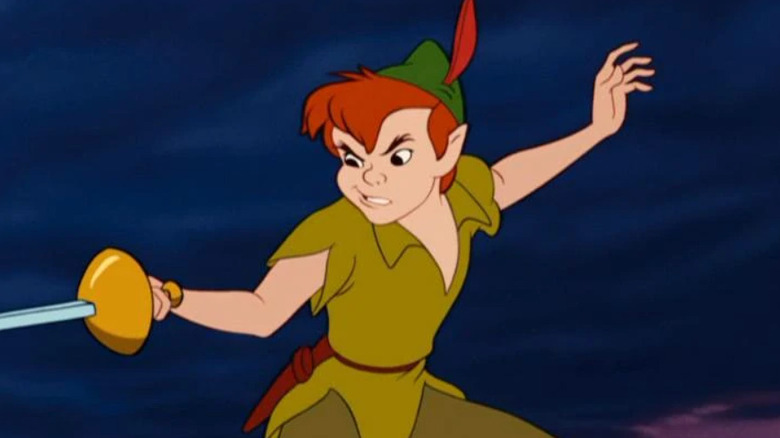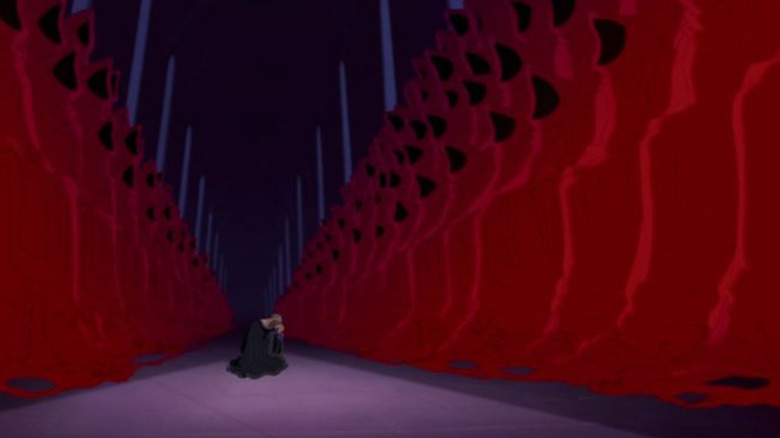Dark Disney Fan Theories That Would Change Everything
Pop culture is a curiously double-edged sword. On the one hand, you have talented artists and storytellers putting their content out into the world for audiences to reflect upon and enjoy. On the other hand, once the content is out, it is no longer under the control of its creators. It now belongs to their audience, who can twist, remix, and repurpose the content in ways that the original creator never intended.
Take, for instance, the world of animation created by Disney. The House of Mouse is known for keeping things light in the darkest of stories. Even when dealing with evil witches, cursed princesses, or scheming pirates, you can always be sure that a Disney story will avoid any details of gruesome trauma, and everything will end happily ever after for the main cast of characters.
But then we enter the world of Disney fan theories, which have no obligation to keep things light for younger audiences. Over the years, there have been a number of disturbing Disney fan theories that take classic stories down dark paths and change the way you view your favorite Disney characters. Here are 14 such theories that take a deeper look at the world of Disney, even if you might not like what you see. Warning: Spoilers ahead.
Eeyore was once a normal human child
As a general rule, Disney characters are happy-go-lucky creatures that keep a sunny disposition for the sake of their young fans. But there are some exceptions, like Grumpy, the surly dwarf from "Snow White and the Seven Dwarfs." And then there is Eeyore, Winnie-the-Pooh's donkey friend, who is always shown to be in a sad and hopeless state.
Much literature has already been written about Eeyore's mental state and whether or not he is suffering from clinical depression. But one particular fan theory chooses to explore not whether Eeyore is suffering from depression but rather how he came to be in such a state. The proposed solution? Eeyore used to be a real boy who was taken to the enchanted island shown in 1940's "Pinocchio" (via TV Tropes).
There, Eeyore was turned into a talking donkey just like all the other cursed little boys. Somehow Eeyore managed to escape and found his way to Pooh and his other friends. But Eeyore could never forget the cruel twist of fate that had befallen him and spent the rest of his days in a state of depression over all that he had lost. Honestly, with such a tragic backstory, we can't say we blame him.
Hans is not the true villain of Frozen
2013's "Frozen" features one of the biggest storytelling upsets in the history of Disney. Prince Hans is initially introduced in the role of the stereotypical "Prince Charming" who sweeps Anna off her feet. But at the end of the movie, Hans is revealed to be a villain who intends to kill Anna and Elsa to gain control of Arendelle.
It's a nice little bit of double-crossing that sets up the film's theme of women not relying on men to solve their problems. But Hans' betrayal does come a bit out of left field. Up until the final act of the film, Hans had been acting like a true hero. In fact, he even saved Anna when they first met when Anna was about to plummet into the sea on a boat. Hans also saved Elsa when a guard was about to shoot her with a crossbow.
As one Reddit user cleverly pointed out, what if Hans had started out genuinely good but was later brainwashed by magic to become evil? The rock trolls are shown to be able to use magic in a number of ways. They are also devoted to Kristoff and want to see him married off to Anna. What if the trolls had engineered a magical ruse that would lead to Hans and Anna breaking up in the most dramatic fashion possible, leaving the door open for Kristoff to get with Anna?
Aladdin lives in a post-apocalyptic world
The majority of Disney stories take place in fictional lands that seem to exist outside of time. But it is generally easy to pin down the general era in which a movie takes place based on the background architecture and dressing styles of the characters, except in the case of 1992's "Aladdin," where a curious anomaly seems to exist.
At first, it seems clear that the film is set in ancient times in the Middle East. But then you start to notice some anachronistic details about the way the Genie talks. He complains upon being awakened that "10,000 years will give you such a crick in the neck!" But he also makes a bunch of references to '90s pop culture, like imitating Arnold Schwarzenegger and Jack Nicholson.
According to this Reddit thread, what if the world of "Aladdin" is an arid, post-apocalyptic society that was rebuilt from the ground up 10,000 years after a giant nuclear war that set technological advancement back to medieval times? To add further credence to this theory, the video game adaptation of "Aladdin" features traffic signs that definitely did not exist centuries ago but could be the remnants of modern society in a post-apocalyptic world.
Moana died in the thunderstorm
2016's "Moana" continues in the tradition of a new breed of Disney princesses who go out on adventures instead of waiting for a prince to rescue them. In this case, Moana is tasked with restoring the sacred stone that is her heart to the goddess Te Fiti by sailing across the seas. Moana undertakes the dangerous journey and manages to reach her destination unscathed. Or did she?
At the start of the journey, Moana is shown to be caught in the middle of a thunderstorm when a giant arc of lightning strikes her boat. What if Moana died from that lightning strike, as any normal human would have? According to a Reddit fan theory by u/davemidrock, the rest of the story deals with the spirit of Moana completing her quest.
That is why she only meets gods and spirits the rest of the way, because she has entered their plane of existence. To complete the theory, once Moana finishes her quest, her spirit is restored to her living body by Te Fiti, and she is thus able to make her way back to her island.
Kristoff wore the skin of his best friend's dead mother
"Frozen" gave us a new best friend duo in ice harvester Kristoff and his pet reindeer Sven. The two are shown to have grown up together and display the tightest of bonds that goes far beyond the regular bond between a man and his pet. In fact, there is a Reddit theory that hints the bond between Sven and Kristoff is far deeper and more disturbing than you imagine.
We never see Sven with his reindeer mother. It is more than likely that the mother reindeer was killed by the harvesters or some hunters in their community for her meat and fur, while they spared Sven's life so they could have a pack mule or a companion for lonely little Kristoff.
Wait, it gets darker. The theory continues with the speculation that the coat of fur Kristoff is seen wearing throughout the movie is actually the pelt from the body of Sven's deceased mother. That could explain the closer-than-normal bond that Sven developed with its master: the poor animal has been tricked into thinking Kristoff is its mother.
Snow White died from eating the apple
1937's "Snow White and The Seven Dwarfs" is generally accepted to be the film that kickstarted the whole "Disney princess" mania. Many of the sequences from the movie have become classic archetypes of our modern understanding of fairy tales. One such sequence occurs near the end, when Snow White eats the poisoned apple and falls into a deep slumber, only to be awakened by the prince's kiss of true love.
The logic of the scene is hand-waved away with the explanation of "magic apple," but when you think about it, there was no reason for the Evil Queen to give Snow White poison that would put her in a coma. The queen had already tried to get Snow White killed once and seemed perfectly willing to do so again by giving her the poisoned apple.
So what if the apple really had succeeded in killing Snow White? According to a Buzzfeed fan theory by Matt Morgan, everything that occurs after that is a metaphor for death. The prince's kiss is a symbol of Snow White awakening in the afterlife. Similarly, the prince on his white horse represents death, which is a reference to a Bible verse. And so Death takes Snow White away from her earthly troubles into heaven (the glowing, golden castle at the end) as a reward for her virtuously-lived life.
The enchantress was The Beast's jilted lover
1991's "Beauty and the Beast" has a pretty obnoxious co-lead in the form of The Beast. He is loud, rude, impatient, and you know, he imprisoned Belle's father until Belle agreed to live in The Beast's castle even though she did not want to have anything to do with him. It's hard to make audiences root for a main character who is so awful in every way.
To offset all that, the film gives us a sympathetic backstory for The Beast, where he and his entire hall of courtiers were cursed by an evil Enchantress for the sin of being too prideful. Sure, pride's bad, but nothing that warrants decades of being trapped in a castle as a hulking beast or assorted furniture and cutlery — especially when the royal courtiers could not possibly be blamed for their master's behavior. But according to a theory by Amanda Mannen of Cracked, the Enchantress had much bigger beef with The Beast than his prideful nature.
The Enchantress was a former lover to The Beast when he was a regular prince, whom he spurned after growing bored with her, something that royals of old were well-known to do. The court of the Prince similarly treated the Enchantress poorly since they were completely loyal to their liege. Consequently, the Enchantress decided to place the curse on the Prince and all his royal courtiers to teach them a lesson about respecting women. A lesson that they finally learned with Belle.
Ariel's mother was killed by Captain Hook
Disney movies about princesses are notorious for not having maternal characters. Sure, you might get a father like the Sultan in "Aladdin" or King Triton in 1989's "The Little Mermaid," but by and large, Disney princesses have to make do without the leavening influence of a mother.
In that vein, Ariel the mermaid also grew up without her mother, Queen Athena. In 2008's "The Little Mermaid: Ariel's Beginning," we find out that Athena was killed by a pirate ship, which ignited King Triton's deep hatred of humanity. Now let's move over to Disney's 1953 feature "Peter Pan," which showed a group of mermaids who were particularly afraid of Captain Hook and his crew of pirates.
As one Reddit user points out, one of the mermaids in "Peter Pan" bears a striking resemblance to Ariel and her mother Athena, right down to the flaming red hair and emerald tail. It can be easily surmised that there is some overlap between Peter and Ariel's world and that it was Captain Hook who rammed his ship into Athena and took her life.
Nala escaped to avoid being molested by Scar
"The Lion King" tries very hard to line up the animal kingdom with regular human royalty. But some things don't fall into place so easily. Like the fact that Mufasa and Scar are shown to be the only male lions in their pride, meaning Nala was also sired by either Mufasa or his alleged brother with one of the other lionesses. This makes Nala and Simba related by blood despite getting married at the end of the movie.
Things get more squicky once you realize that Mufasa's death and Simba's departure from the Pride Lands means Scar is the sole male lion in his tribe now. Part of the whole "Circle of Life" schtick is that Scar is now responsible for creating new lion cubs by getting with the lionesses. According to one Reddit fan theory, Nala escaped from the Pride Lands because she had matured into an adult, and Scar was trying to put the moves on her to make her his new broodmare.
The theory is supported by a song that was eventually deleted from the movie called "The Madness of King Scar." In the song, Scar tries to seduce Nala, and he's not worried about getting her consent, as he says, "Nala, Nala, Nala. You know, you really have no choice. One way or another, I always get what I want."
Gaston killed Bambi's mom
In the annals of Disney movie history, there is perhaps no greater villain than the unnamed and unseen hunter who killed Bambi's mom in the 1942 film about the young deer. The nameless hunter drew so much ire from the audience despite not having a single line of dialog that the character was named one of the greatest movie villains of all time by AFI.
Cut to 1991's "Beauty and the Beast," where we meet another villainous hunter, the thoroughly obnoxious Gaston. At the start of the movie we see a deer that looks very similar to Bambi's mother drinking water from a stream. Even the birds in the scene look like the ones in "Bambi." Then there is the song Gaston sings in tribute to his own awesomeness, which includes the line, "I use antlers in all my decorating," and we see a wall of animal's heads from creatures that Gaston has killed over the years.
Again, the deer whose head is mounted on the wall looks suspiciously like Bambi's mother. As the Mirror points out, is not difficult to believe that Gaston was the callous hunter who killed young Bambi's mother, which would give the character the rare distinction of being the main source of misery in 2 separate iconic Disney movies.
Calhoun killed her husband
2012's "Wreck-It Ralph" was Disney's attempt to move their mythology out of ancient fairy tales into the modern era by telling a story about sentient video game characters. In the world of "Wreck-It Ralph," gaming characters can interact with each other outside of their games, regardless of the genre or era of gaming they belong to.
This gives us one of the most unlikely couples in Disney film history when Super Mario stand-in Fix-It Felix is shown to have fallen in love with Sergeant Tamora Jean Calhoun, who comes from the bleak and violent world of first-person shooters. And according to one disturbing theory on Reddit, we may have gotten a glimpse of just how deeply Calhoun has been affected by her game's unforgiving world.
During her backstory flashback, it is revealed that Calhoun's soon-to-be husband was eaten by a Cy-Bug on the day of their wedding. This prompted Calhoun to unleash a barrage of bullets at the Cy-Bug. Things get darker when you remember that Cy-Bugs become what they eat. So it is highly possible that Calhoun was forced to kill her own husband on their wedding day.
Finding Nemo was about the five stages of grief
At the start of 2003's "Finding Nemo," we meet two clownfish Marlin and his young son Nemo, the sole survivor of a predatory attack that took the lives of all of Nemo's siblings and Marlin's wife. Years later, Nemo is kidnapped by a fisherman, and Marlin embarks on a desperate quest to get his son back that takes him across the globe on a series of adventures.
Or did he? According to a Reddit fan theory by darklighter5000, Nemo died in the attack that took the lives of his mother and siblings. A broken Marlin was unable to deal with the loss, and so he imagined a single egg surviving that grew to become Nemo. The rest of the movie is then Marlin's journey through the five stages of grief to deal with the loss of his family. The first stage is "denial," when Marlin refuses to accept his family is gone and conjures up the mental image of Nemo instead. Then comes "anger," as Marlin is shown to get unnecessarily angry whenever Nemo does something remotely dangerous.
The next stage is "bargaining," which Marlin is forced to do constantly on his journey to getting Nemo back from the fisherman. After that, Marlin moves on to the fourth stage, "despair," when he is ready to give up the search for Nemo. Finally, there comes "acceptance," as Marlin makes his peace with his family's death and learns to stop obsessing over Nemo.
Peter Pan kills all those who want to grow up
Peter Pan as he appeared in the 1953 Disney movie of the same name was a difficult character to get behind. He was selfish, bratty, and rebellious, but without any of the brains or high-mindedness that can give such characters their own unique brand of charisma as anti-heroes. Basically, all Peter wanted was to play with his friends all the livelong day, even if those "friends" had to be kidnapped from their homes.
The kidnapped children are taken to Peter's magical home in Neverland, where they can play and frolic without a care for the rest of their lives. But is it really such a simple arrangement? What if the children eventually get tired of non-stop play and wish to move on to the next chapter of their lives, adulthood? According to a fan theory on Reddit, Peter does not take kindly to such plans.
The theory states that Peter murders any children who get tired of playing with him and wish to leave. Captain Hook and his crew of pirates are such children who managed to escape Peter's wrath and become adults. Now, Hook and his crew are devoted to stopping Peter so he can no longer treat children as his personal playthings.
Claude Frollo sold his soul to the devil
Disney movies are filled with iconic villain songs, from "Be Prepared" to Jafar's reprise of "Prince Ali." But none of those songs rise to the heights, or rather depths, of "Hellfire," which is sung by Judge Claude Frollo in 1996's "The Hunchback of Notre Dame."
The lyrics of the song are disturbing enough, as Frollo sings about his obsession with Esmeralda and how he will make her his whether she wants him or not. But what takes the song to another level is the imagery invoked. We see the Judge standing in front of what appears to be a demonic jury as he confesses his sins and declares his evil intentions.
According to one theory by YouTuber Isaac Carlson, the fire imagery is meant to depict hell itself, and what we are actually seeing is Frollo selling his soul to the devil in return for getting his hands on Esmeralda. The theory takes on a new dimension due to the climax of the movie, when Frollo falls to his death covered in flames — as though Satan is claiming his soul as Frollo descends into hell.
